Chilean Rodeo
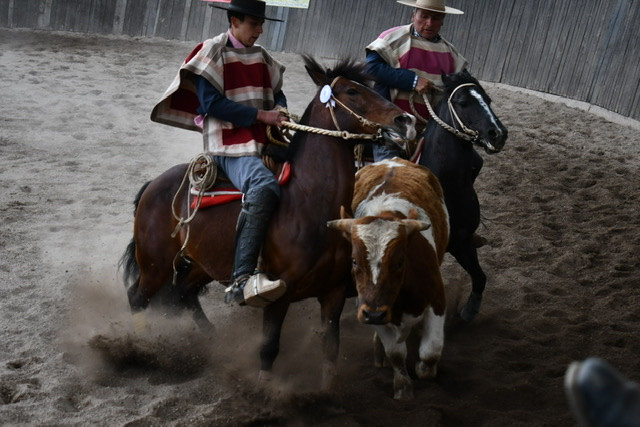
On our way in to Magic Waters Patagonia Lodge from Coyhaique, we noticed what appeared to be rodeo grounds filled with horses, livestock trucks and men wearing flat-brimmed hats & colorful serapes. They men are called huasos, skilled horsemen similar to the US cowboy or Argentine Gaucho. Inquiring at the Lodge, we learned indeed there was a rodeo taking place and it would extend into the next day. We asked, Monty, our guide if we could leave a little time at the end of the day to attend.

We indeed felt foreign walking amongst this classic subculture of Patagonian Chile.
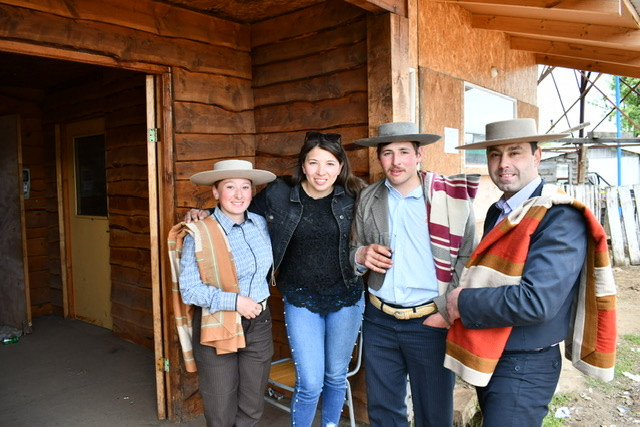
Men and women alike were decked out in their finest attire. In my most basic of limited Spanish, I begin asking permission to take photos.
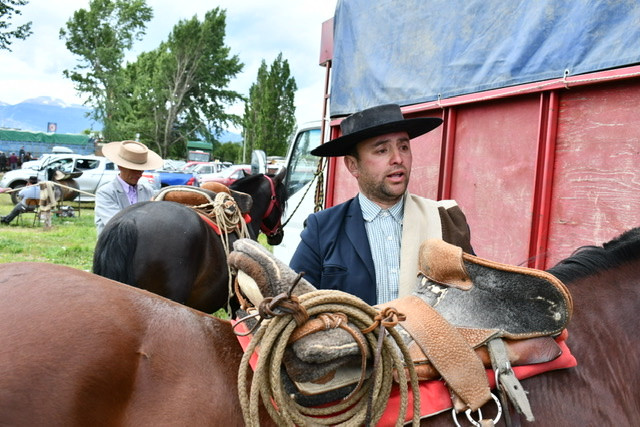
We came across one gentleman who really looked the part with his dress, handsome looks and poise. He began joking with us that if we were going to take pictures he wanted some copies.
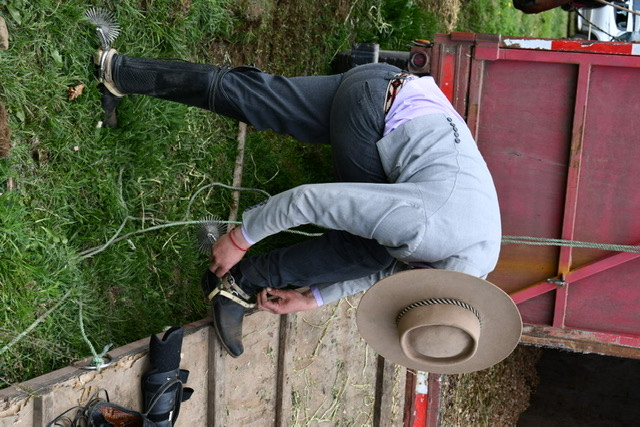
We were told that two huasos work as a team and the man next to him strapping on his spurs, which had wheels the size of a small fly reel, was his partner. Further conversation revealed the final event of the day was about to begin in the arena. Much to my surprise, I was invited to mount the saddle of the horse and take it for a ride. I initially declined but he insisted. Lynnette starting everyone around us clucking like a chicken didn’t help my position.
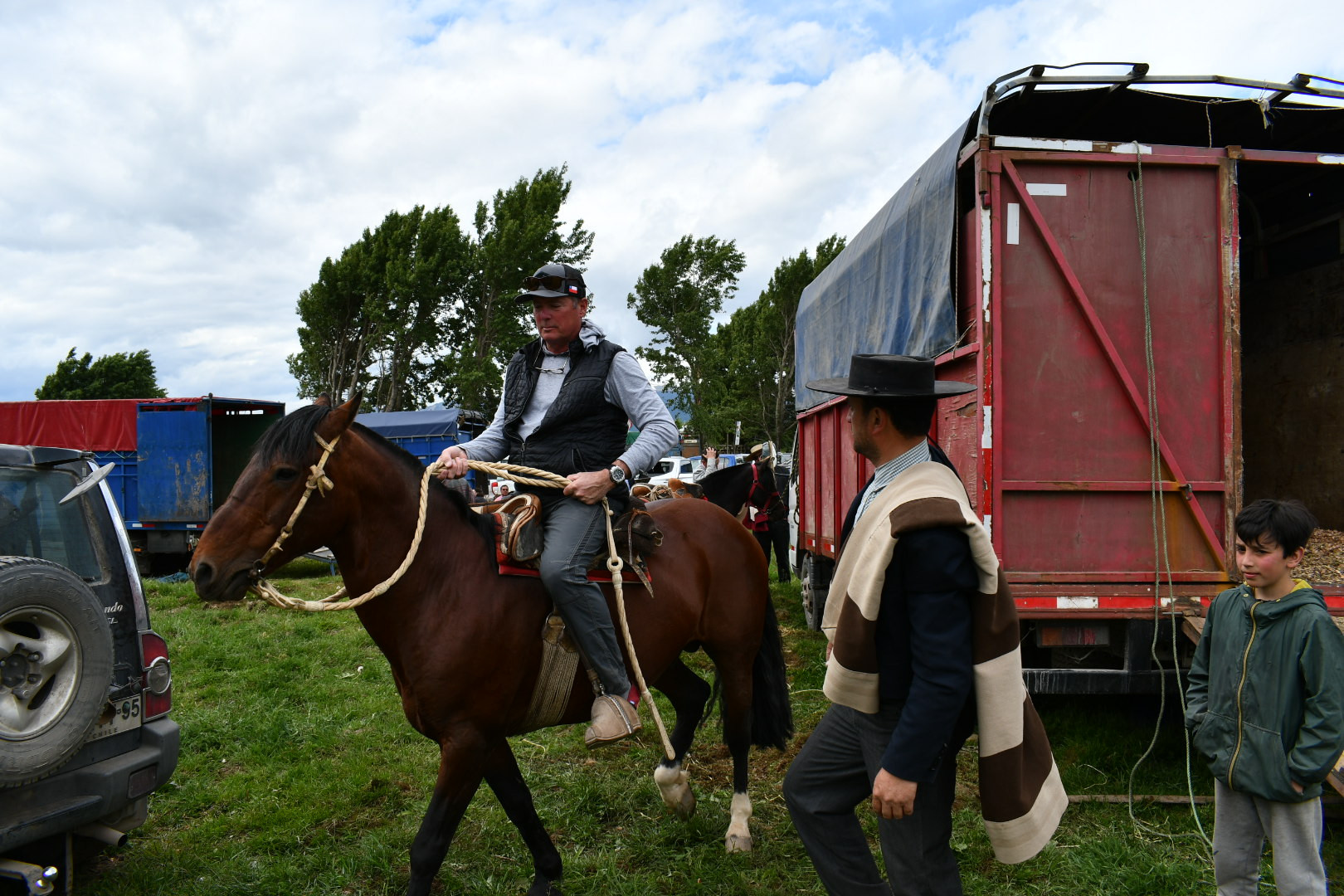
Having owned horses in a previous life, I knew enough to get up on the horse without looking like a complete dork.Taking the reins, I gently urged it around the truck. Upon removing my fat ass from the saddle, the gentleman lovingly pinned a ribbon on the horses bridle. The ribbon, we were told, indicated this team was the leading contender at the event.
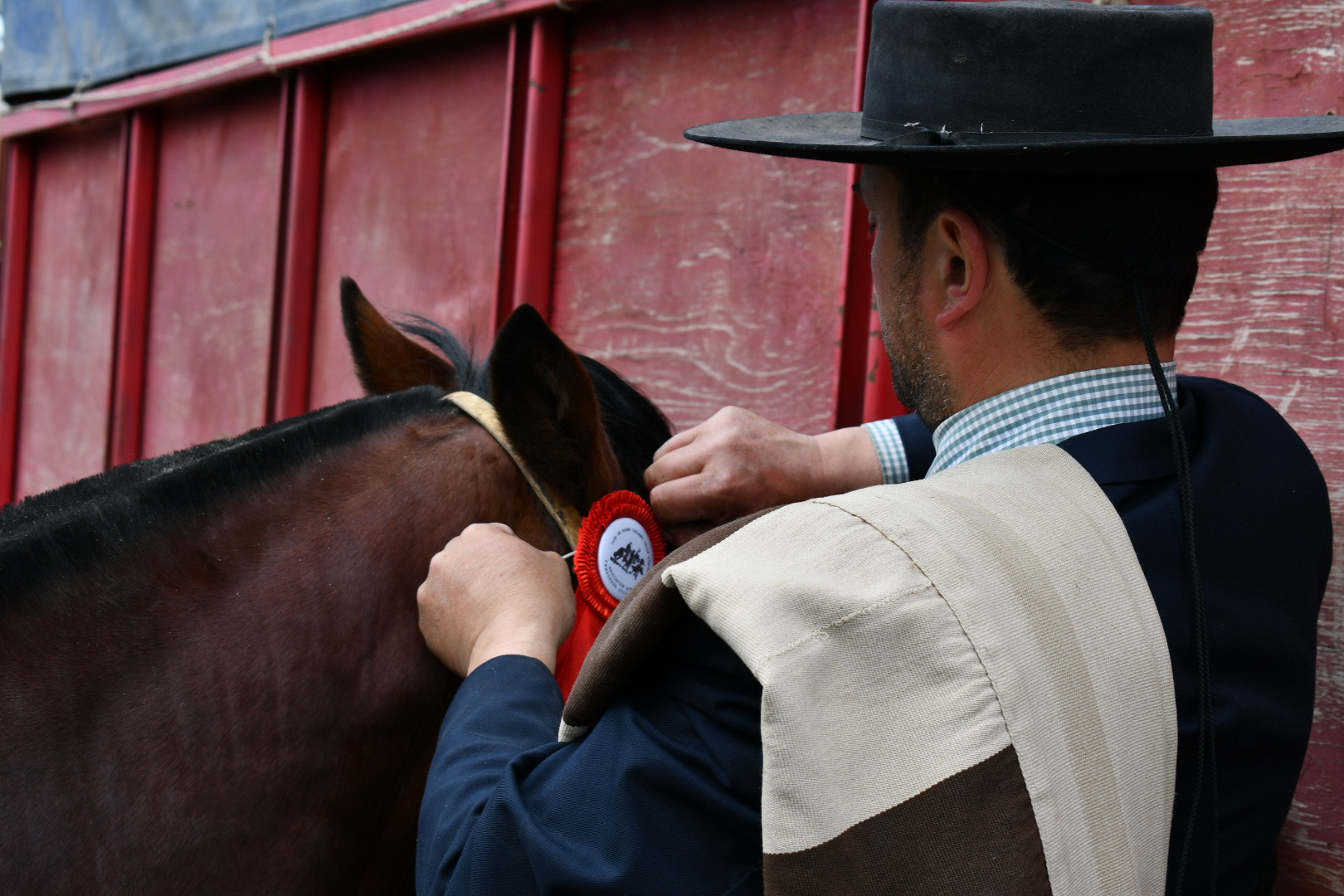
Lynnette remarked I was always good at recognizing talent.
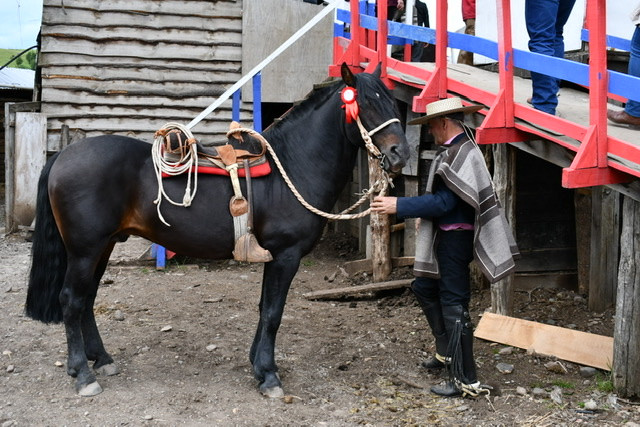
As we made our way to the arena the huasos, who all had their serapes folded and draped over their shoulder while dismounted, mounted their horses and donned their serapes over their heads.
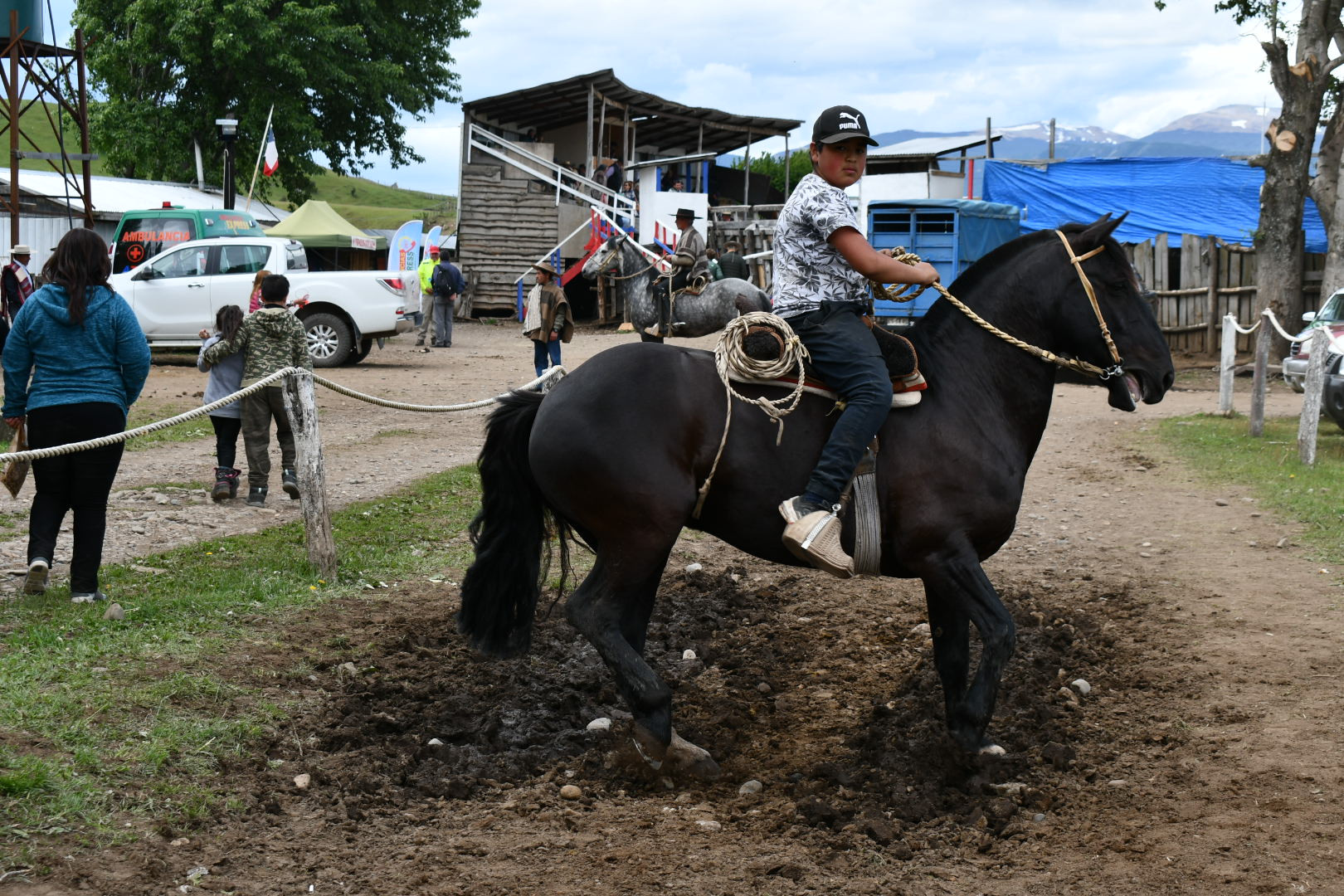
A boy of about 12 cleared the path to the arena by walking a magnificent horse sideways towards us. He hammed up for a couple photos then came to sit by us in the arena. His name was Francisco, he told us , and proudly pointed out the team he worked for. We suspected he filled the role of a groom.

The arena event began with the teams parading in circles before us repeatedly, riders with and without their hats, and everyone standing their horses and selves at attention to sing the national anthem watch the raising of the Chilean flag. Francisco proudly removed his hat and sang with the audience.
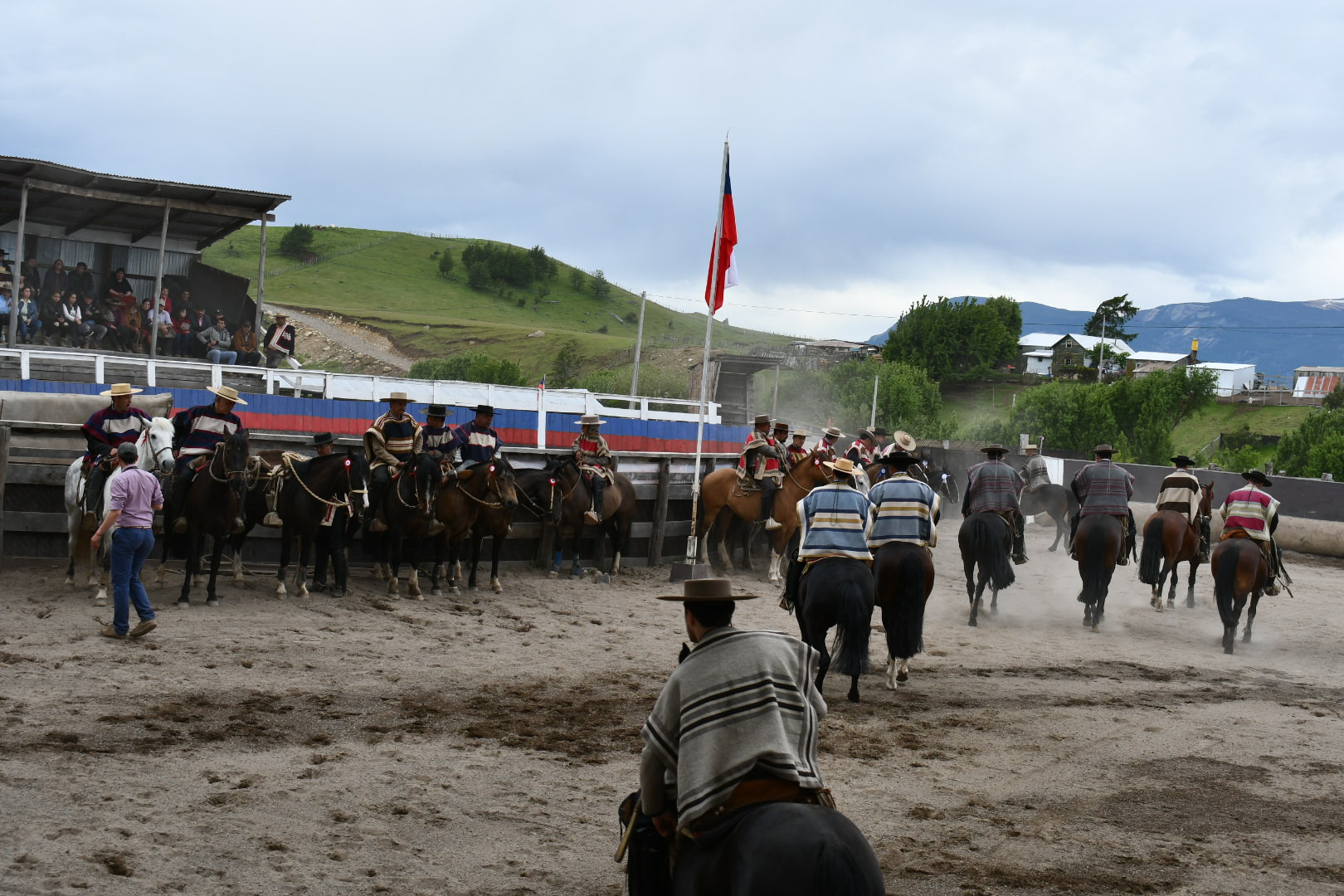
The arena, which was shaped somewhat like an “at” sign (@) had two leather-covered bumpers at the three and nine o’clock positions on its wide end. As their compatriots stood they and their horses at attention beneath the Chilean flag at center, the teams took turns running a steer between the bumpers.
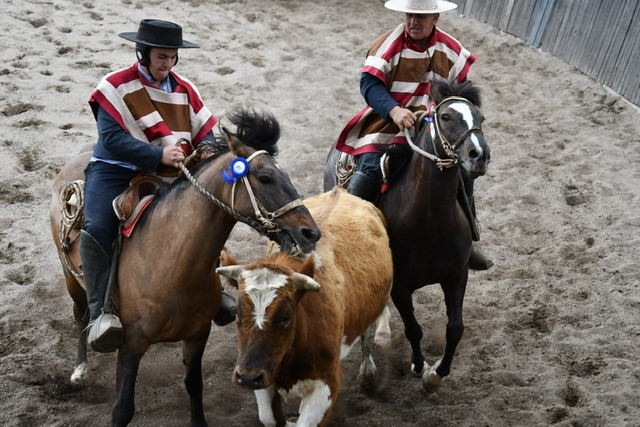
The horsemanship was impressive. One horse and rider would drive the rear of the steer as the other horse was walked sideways to keep the steer moving in the direction desired.
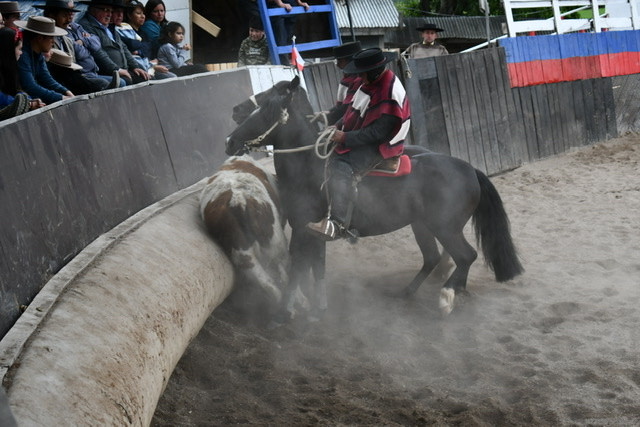
The steer was a whipped up within the confines of the inner circle then brought out in open gallup by the riders who would maneuver it three times between the two sets of bumpers. A lot of nuance and style were to be considered, and through interpreting the “oo’s”, “ah’s” and groans we quickly discerned the importance of the steer being brought to each bumper and to a complete stop on the bumper as early as possible within the bumpers approximate 10 m length. If the steers front legs were raised upon the bumper, that was considered exceptional form.
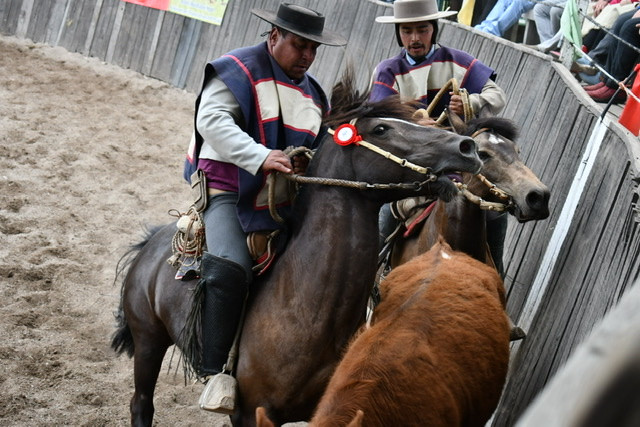
After three back-and-forths, the exhausted steer was shagged out of the arena by a short man in huaso dress we jokingly called the rodeo clown.

As we watched the teams we began focusing our attention on the intensity of the horses. They were the real stars of the show.
